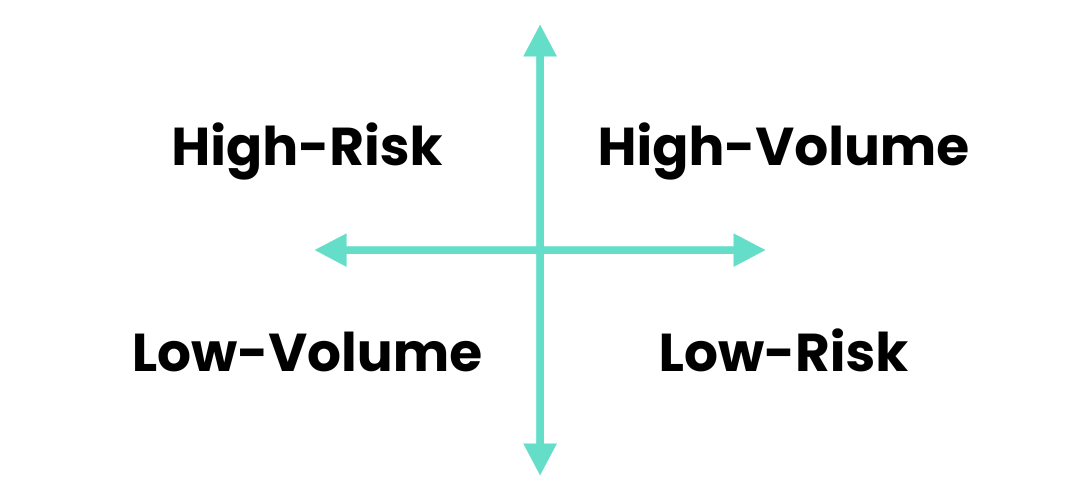2025 Law Firm Billing Rate Increases: Why Rates Rose and How to Negotiate Lower Fees
Tight budgets and rising costs were a defining characteristic of 2025, and legal billing was no exception. The data from our most recent rates report on the Am Law top 100 firms showed a jump in billing rates of 8.3% — the second-largest increase in the four years since we started tracking these statistics.
The bad news is that rates are likely to continue climbing.
The good news? In-house teams can still take control of rate increases if they know how to navigate this environment. That includes negotiating reasonable rate increases to control costs and ensure they can continue to deliver effective legal services to the broader company.
Here’s what you need to know going into 2025.
Why Law Firm Billing Rates Went Up
Among the most significant factors driving price increases were high rates among top firms and a tight attorney labor market.
The Inflation Factor: How Rising Costs Impacted Legal Fees
Last year, high inflation and rising interest rates drove up the cost of doing business. To compensate, law firms, like many businesses, raised their rates.
It’s worth noting, however, that legal firm rate increases were higher than inflation. This indicates firms raised rates beyond rising costs, influenced by additional factors.
Why Demand for Top Talent Drives Legal Billing Up
Part of that cost comes from another spike in legal salaries in 2025, building on a trend of salaries shooting up dramatically in recent years. The trend has also hopped the pond, with UK law salaries increasing in tandem with the US. The growth in demand for legal work is also outpacing the entry of new attorneys into the labor market, and firms have fiercer competition than ever to attract and retain top talent.
Role of In-House Teams
Firms can’t increase their rates unilaterally. In-house teams get a right of refusal, or at least a right of negotiation, before rate increases come into effect. In-house teams may have felt that the increases requested were justified given the caliber of work from their firms or the rising costs firms had to shoulder. However, it’s also possible that many teams didn’t have the data and the processes in place to push back on significant rate increases.

The Three Biggest Factors in Law Firm Billing Rates
While a turbulent economy and shifting geopolitical landscape both play a role in rising legal firm rates, most of the cost difference between firms is baked into just three factors.
Firm Size
The size of the firm you engage in indicates their market power and their ability to command higher rates. The top 50 firms in the US, for instance, charge double the rates of their peers lower down the Am Law® 100 list. These high-grossing, large law firms attract some of the best lawyers in the world, but you’re paying for both the expertise and the brand.
Practice Area
Another key factor in billing rates is the type of legal work being done. High-stakes and complex work, like Mergers and Acquisitions, command a premium, with our latest data showing that the top 25 Am Law firms charge partner rates of $1,680 per hour.
Meanwhile, more routine work, like intellectual property filings, comes with correspondingly lower pricing.
Geography
Lastly, partner rates vary significantly by metro area, with law firm billing rates reflecting the cost of living of fee earners in the most expensive cities.
For example, our study shows that rates in New York are more than double those charged in Kansas City. Other high-cost cities include Chicago, Los Angeles, Washington D.C., and San Francisco.
5 Ways to Negotiate Lower Fees
Rate increases are a normal part of doing business. But that doesn’t mean your in-house legal team has to accept increases at face value. Financially prudent in-house teams are increasingly adopting new strategies to manage their legal spend.
That includes evaluating existing partnerships and ensuring that top law firms are only engaged on matters where their expertise is really adding value — instead of hiring them as a matter of course because the relationship is long-standing. For some legal matters, there may also be scope for outsourcing to smaller firms or Alternative Legal Service Providers (ASLPs).
Wherever your legal spending is going, it’s worth employing strategies that give you greater insight so you can negotiate the best possible rates. Here are our top tips for getting it right.
Use an E-Billing System to Enforce Rates
You can’t change what you can’t see, and many in-house legal teams end up overpaying because of inconsistent invoice reviews or incorrectly charged rates.
To track rates effectively and start the conversation with outside counsel about better potential rates, we recommend using a dedicated e-billing system.
Having e-billing in place also gives your in-house team more control because you can require firms to submit rate requests for their fee-earners. Those can then be checked, approved and automatically monitored on future invoices so that any incorrect charges can be flagged.
Leverage Data to Better Understand—and Push Back on—Rate Increase Requests
Another advantage of having e-billing in place is that it allows in-house teams to quickly benchmark rate increase requests against the rates they’re currently paying. If the increase seems steeper than in previous years, having the data on hand is a valuable way to open up the conversation about why external counsel is requesting an increase and whether it’s appropriate.
Remember: You don’t have to accept rate increases without question. Having open, honest conversations with outside counsel if you have concerns is both appropriate and a necessary part of managing legal spending.
Create an Outside Counsel Engagement Strategy
A structured approach to resourcing and engaging outside counsel is a key part of ensuring you’re getting the best rates across the board.
Your legal team should assess outside counsel spending by vendor, matter type, and geographic location to determine where there might be opportunities to cut costs.
That, in turn, will allow you to make better choices about which firms to instruct work to and for which matters.
Matt Wheatley, VP of Client Strategy at Priori, puts it like this:
“’Right-sourcing,’ a term that describes the process of categorizing legal work and shifting it to internal and external providers that offer the most value, has become a buzzword in the legal industry because the idea it represents is a powerful one. In-house teams that think strategically about where their legal dollars are spent can save money while increasing value even as rates rise.”
Once again, a sound e-billing system adds value here by centralizing the information you need for decision-making and making it easy for everyone on the team to access.
Use a Risk Matrix to Assess When It’s Appropriate to Use Top Firms.
If your team already uses Am Law top 100 firms, they’re likely to remain a core part of your legal outsourcing strategy. But as you refine your guidelines around outside counsel engagement, you’ll likely find some matters that could either be handled internally or shifted to lower-cost providers.
Deciding when to engage top firms versus when to instruct work to other providers can still be tricky, however, so it’s worth running individual matters through a risk matrix.

For each matter your team is dealing with, assess the legal complexity and the risk associated with that matter. Matters that are both high-risk and high-complexity should continue to be instructed to top firms (think big mergers or high-stakes litigation).
For everything else, your team should make a call about whether it’s worth handling the matter internally or whether the time saved by engaging a smaller firm or ALSP is more valuable.
Those decisions will naturally depend on the matter in question. For example, helping a colleague get their legal ducks in a row for a visa application is generally a low-complexity and low-risk task, which is easy to handle internally.
Monitor Partner Time
Another important consideration in negotiating better rates is the amount of time being spent on your matters by partners at outside firms. They may be worth their weight in gold, but it’s not doing your budget any favors if the bulk of work on your matter could actually be handled by someone with an associate’s level of expertise.
For example, if a partner is spending 30% of their time on document review, consider negotiating for an associate to handle this task.
Advocating for a closer look at the staffing strategy often proves cost-effective for in-house teams.
Try to develop a staffing strategy collaboratively with outside counsel—and don’t hesitate to underscore potential cost-optimization opportunities.
Then, use your e-billing system to monitor partner resourcing and ensure firms are sticking to the guidelines you’ve established.
Take Control of Rates with Brightflag
The tips above are a strong starting point for effectively controlling law firm rates. But if you really want to get to grips with how to optimize your legal budget, you need a legal spend management system like Brightflag.
Brightflag helps you understand what you’re currently charged for legal work and to set and enforce reasonable limits on rate increases.
Brightflag also makes it easy to negotiate optimal rates with your firms and to identify areas where work can be insourced, outsourced, or moved to lower-cost providers. All while ensuring your legal team delivers optimal outcomes to the business at large.
Want to take charge of your legal spend? Brightflag can provide the tools you need to track, analyze, and optimize your budget. Schedule a demo to see how.



